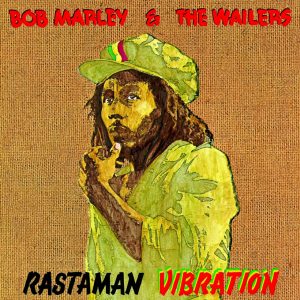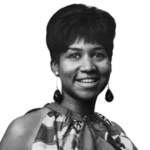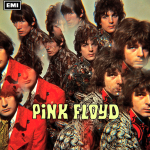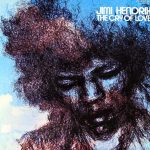
Category: Album
Title: Rastaman Vibration
Artist: Bob Marley
Released: April 30, 1976.
Genres: Reggae, Roots Reggae
Album Background
Release Date and Label
Rastaman Vibration was released on April 30, 1976, by Island Records. It was Bob Marley’s seventh studio album and continued his successful partnership with Island Records, which had helped bring reggae music to a global audience.
Artist Context
By the time of Rastaman Vibration, Bob Marley had already established himself as an international reggae superstar. This album was created during a period of intense political tension in Jamaica, and Marley’s music was increasingly seen as a voice for the oppressed and a symbol of resistance against social injustice.
Concept and Inspiration
Themes and Messages
The album delves into themes of political oppression, Rastafarian spirituality, and social justice. Songs like “War” and “Rat Race” directly address issues of inequality and conflict, while other tracks such as “Positive Vibration” and “Who the Cap Fit” reflect messages of hope, self-awareness, and resilience.
Inspiration
Marley’s Rastafarian beliefs heavily influenced the album, as did the socio-political unrest in Jamaica during the mid-1970s. The album’s lyrics draw from speeches by Ethiopian Emperor Haile Selassie I, a central figure in Rastafarianism, and reflect Marley’s commitment to promoting peace and unity through his music.
Writing and Recording Process
Songwriting and Recording
The songwriting on Rastaman Vibration involved contributions from Marley and other band members, with the music deeply rooted in the rhythms of reggae. Recording took place primarily at Harry J. Studios in Kingston, Jamaica, with additional work done at Criteria Studios in Miami. The album was crafted to maintain the authenticity of reggae while incorporating production techniques that appealed to international audiences.
Notable Collaborations
Marley’s backing band, The Wailers, played a crucial role in the album’s creation, with members like Aston “Family Man” Barrett (bass) and Carlton Barrett (drums) contributing to its distinctive sound. Additionally, Rita Marley and the I-Threes provided backing vocals, enriching the album’s harmonic texture.
Production Details
Producers and Sound
- Key Producers: Bob Marley and The Wailers, with production assistance from Chris Blackwell.
- Sound and Musical Style: Rastaman Vibration is characterized by its roots reggae sound, emphasizing strong basslines, steady drum patterns, and Marley’s soulful vocals. The album’s production balances raw, organic elements with a polished finish, making it accessible to both reggae enthusiasts and mainstream listeners.
Track-by-Track Analysis
-
Track Listing:
- “Positive Vibration”
- “Roots, Rock, Reggae”
- “Johnny Was”
- “Cry to Me”
- “Want More”
- “Crazy Baldhead”
- “Who the Cap Fit”
- “Night Shift”
- “War”
- “Rat Race”
Key Tracks:
- “War”: Perhaps the most politically charged track on the album, “War” uses words from a speech by Haile Selassie I and addresses themes of racial equality and the struggle against oppression. Its message is timeless, and it has become one of Marley’s most enduring songs.
- “Roots, Rock, Reggae”: This track became one of Marley’s biggest hits in the United States, reaching number 51 on the Billboard Hot 100. Its laid-back rhythm and catchy hook made it an anthem for reggae music, introducing the genre to a wider audience.
- “Johnny Was”: A poignant narrative song, “Johnny Was” tells the story of a mother mourning her son, who was killed in a senseless act of violence. The song’s emotional depth and storytelling make it one of the standout tracks on the album.
- “Who the Cap Fit”: This track features a proverb-like refrain, “Who the cap fit, let them wear it,” addressing themes of betrayal and self-reflection. Its introspective lyrics and steady groove make it a fan favorite.
Awards and Nominations
Awards and Nominations
Although Rastaman Vibration did not win any major awards at the time of its release, it was nominated for a Grammy Award in 1977 for Best Reggae Album, which was a significant acknowledgment as it marked the genre’s growing acceptance in the mainstream music industry.
Sales and Charts
Rastaman Vibration was Bob Marley’s first album to reach the Top 10 of the Billboard 200, peaking at number 8. It was a commercial success and helped solidify Marley’s reputation as an international music icon.
Impact and Legacy
Influence and Long-term Impact
Rastaman Vibration reinforced Bob Marley’s role as a global ambassador for reggae and Rastafarianism. The album’s political messages and spiritual themes resonated with listeners worldwide, contributing to its enduring popularity. It has influenced countless artists across various genres and remains a cornerstone in the history of reggae music.
Conclusion
Summary
Rastaman Vibration is a powerful testament to Bob Marley’s ability to blend music with social commentary. The album’s success marked a significant moment in Marley’s career, elevating him to new heights of international recognition.
Final Thoughts
As one of Bob Marley’s most important works, Rastaman Vibration continues to inspire and resonate with listeners decades after its release. Its combination of infectious rhythms, thought-provoking lyrics, and Marley’s passionate delivery ensures its place as a timeless classic in the reggae genre.



















Leave a Reply